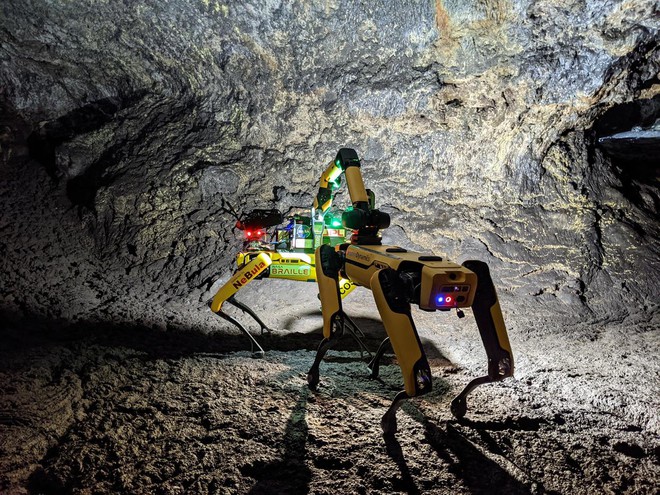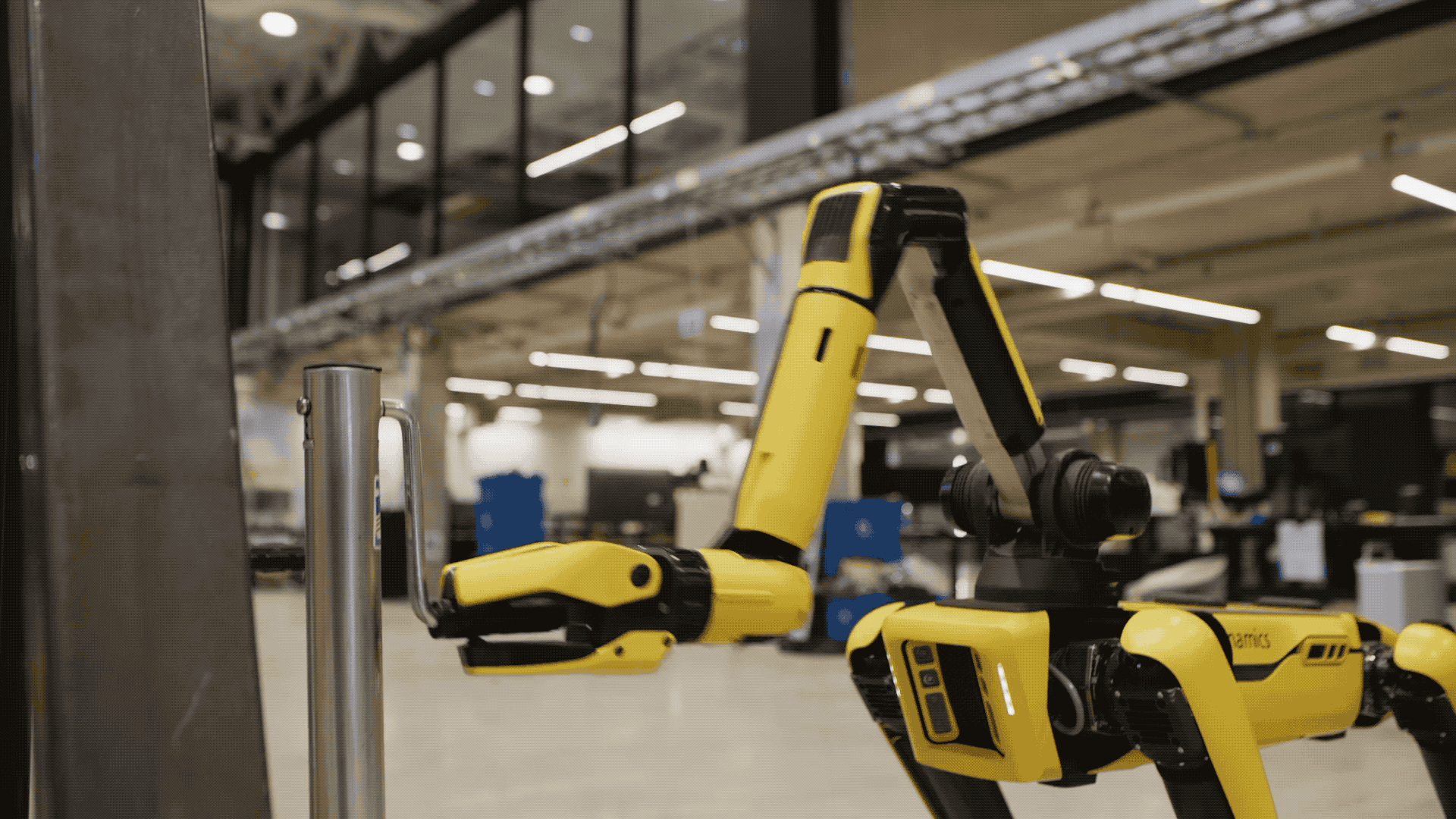NASA trains robot dogs to help humans explore Mars caves
- Tram Ho
When looking for signs of life on other planets, scientists say the caves are an important place to explore. However, how can a team of scientists from Earth effectively explore the complex, dark, alien landscapes of another world?
NASA and Boston Dynamics have found the answer: Fully autonomous robots.
Caves are among the most likely places to find signs of life on other planets, both present and from the past, as they have the ability to protect life from cosmic rays and variables. extreme temperature fluctuations around our solar system. A NASA project called BRAILLE is currently exploring Mars-like caves that already exist on Earth to hone technologies important for future missions.

Robot Spot explores a Mars-like cave.
According to the researchers, this project kicked off the first fully automated robotic exploration of caves several hundred meters long and with limited surface contact. As the robots explore, given no prior information about the environment, a team of researchers outside the cave simultaneously perform the same actions that scientists would do on a star mission. Fire is actually in the future.
The study was led by Dr Ali Agha, now in its third year. The research is expected to “change the way we think about future missions”.
But researchers are also interested in cave exploration for a reason other than looking for signs of life: providing a natural haven for future astronauts exploring Mars or the Moon. .
“Future human exploration missions could benefit from robots in a variety of ways,” says Agha . In particular, robots can be sent out on predecessor missions to provide more information about destinations before humans land on those destinations. In addition, robots can accompany astronauts on missions to help with certain terrain reconnaissance or do logistics, and many jobs can make astronaut missions safer and more efficient.” .
So how is Martian robot design different from Earth robot design? Agha says they’re similar in many ways, especially when it comes to the robot’s AI brain, called NeBula, and its ability to process information and make decisions when they’re not in contact with scientists on The earth.
But when it comes to the robot body, that’s where things get more complicated. Scientists need to consider temperature management, protection of the robot from radiation, as well as severe power and power limitations when traveling to a distant world – all aspects previously unseen. considered on Earth.
Boston Dynamics’ Spot robot proved an extremely viable body for NeBula.

” Spot is one of the most capable robots we have and it is amazing to see how it successfully responds to high-level decisions and commands coming from the robot brain and how it is able to maintain stable on harsh terrains, ” Agha said. ” In addition to our traditional cars, the ability to ‘walk’ is a great asset when dealing with rough terrain, no roads and no flat surfaces.”
“We will have many mobile robots that can carry different tools, as opposed to a large robot that will have difficulty traversing the terrain,” said project deputy Benjamin Morrell.
“Robot Spot is one of the few robots that satisfies all of these things simultaneously,” says Agha. ” So integrating our robotic brain, NeBula, on Spot has been pushing the boundaries of what’s possible in the exploration of as-yet-unknown Mars-like environments.”
The robots usually can’t communicate from inside the cave, so scientists eagerly await their return to the surface to retrieve data, which could include 3D maps of the cave’s interior, information about the cave’s interior, and more. scientific goals or general environmental findings.

Some robot spots are also equipped with very flexible arms to bring back small specimens from the cave wall for analysis. The researchers hope that these robots will be able to autonomously perform parts of future missions in space, once humans have established a certain degree of trust with them.
“ Next-generation robotic designs and mechanical mobility will enable new types of tasks to be performed on terrains that cannot be reached by traditional wheeled robots,” Agha said. . ” Additionally, thanks to increased speed and mobility, future missions could target destinations that have traditionally been considered too far away from star-landing regions. Fire.”
`Reference: CBSNews
Source : Genk
